An Energy-Efficient Cluster Head Selection Scheme for Energy-Harvesting Wireless Sensor Networks
Abstract
1. Introduction
- An SN is designed for each cluster to monitor and store real-time information about residual energy for all CMs and the CH in the same cluster. During the CH selection stage, the designed SN specifies a corresponding CM as the new CH according to the monitoring results and thus decreases the workload of the CH to preserve more energy for data forwarding. It also reduces the consumed energy for CH selection.
- The transmission radius of nodes—including CH and CMs—is adjusted dynamically in EECHS for efficient utilization of the harvested energy.
- Extensive experiments were conducted, and the experimental results verify the effectiveness of EECHS in selecting high-quality CHs in a low-energy-consumption scheme that utilizes the harvested energy efficiently.
2. Related Work
3. Network and Energy Consumption Model for EH-WSNS
3.1. Network Model for EH-WSNs
3.2. Energy Consumption Model
4. Algorithm Implementation
4.1. The Cluster Establishment Stage
4.2. Data Collection Stage
| Algorithm 1: SNWorking |
 |
| Algorithm 2: SeneorNodeWorking |
 |
5. Performance Evaluation
5.1. Simulation Setup
5.2. Evaluation of Experimental Results
6. Conclusions
Author Contributions
Funding
Conflicts of Interest
References
- Liu, X. A survey on clustering routing protocols in wireless sensor networks. Sensors 2012, 12, 11113–11153. [Google Scholar] [CrossRef]
- Jan, B.; Farman, H.; Javed, H. Energy efficient hierarchical clustering approaches in wireless sensor networks: A survey. Wirel. Commun. Mob. Comput. 2017, 2017, 6457942. [Google Scholar] [CrossRef]
- Zhang, X.; Ding, Y.; Yao, G.; Hao, K. An adaptive clustering routing algorithm for energy harvesting-wireless sensor networks. In Proceedings of the 2016 IEEE Congress on Evolutionary Computation (CEC), Vancouver, BC, Canada, 24–29 July 2016. [Google Scholar]
- Heinzelman, W.R.; Chandrakasan, A.; Balakrishnan, H. Energy-efficient communication protocol for wireless microsensor networks. In Proceedings of the 33rd Annual Hawaii International Conference on System Sciences, Maui, HI, USA, 4–7 January 2000. [Google Scholar]
- Chen, G.; Li, C.; Ye, M. An unequal cluster-based routing protocol in wireless sensor networks. Wirel. Netw. 2009, 15, 193–207. [Google Scholar] [CrossRef]
- Yao, Y.K.; Yu, Z.L.; Wang, G. Clustering routing algorithm of self-energized wireless sensor networks based on solar energy harvesting. J. Chin. Univ. Posts Telecommun. 2015, 22, 66–73. [Google Scholar]
- Sudevalayam, S.; Kulkarni, P. Energy harvesting sensor nodes: Survey and implications. IEEE Commun. Surv. Tutor. 2011, 11, 443–461. [Google Scholar] [CrossRef]
- Al-Azzawi, W.; Al-Akaidi, M. Robust stability of solar-power wireless network control system with stochastic time delays based on H-infinity-norm. Int. J. Syst. Sci. 2015, 46, 896–907. [Google Scholar] [CrossRef]
- Zhang, X.; Yao, G.; Ding, Y.; Hao, K. An improved immune system-inspired routing recovery scheme for energy harvesting wireless sensor networks. Soft Comput. 2017, 21, 5893–5904. [Google Scholar] [CrossRef]
- Zhang, Y.; He, S.; Chen, J. Distributed sampling rate control for rechargeable sensor nodes with limited battery capacity. IEEE Trans. Wirel. Commun. 2013, 12, 3096–3106. [Google Scholar] [CrossRef]
- Gupta, V.; Pandey, R. An improved energy aware distributed unequal clustering protocol for heterogeneous wireless sensor networks. Eng. Sci. Technol. Int. J. 2016, 19, 1050–1058. [Google Scholar] [CrossRef]
- Razaque, A.; Elleithy, K. Energy-efficient boarder node medium access control protocol for wireless sensor networks. Sensors 2014, 14, 5074–5117. [Google Scholar] [CrossRef]
- Darabkh, K.A.; Albtoush, W.Y.; Jafar, I.F. Improved clustering algorithms for target tracking in wireless sensor networks. J. Supercomput. 2017, 73, 1952–1977. [Google Scholar] [CrossRef]
- Lin, H.; Wang, L.; Kong, R. Energy efficient clustering protocol for large-scale sensor networks. IEEE Sens. J. 2015, 15, 7150–7160. [Google Scholar] [CrossRef]
- Shalini, V.B.; Vasudevan, V. Achieving energy efficient wireless sensor network by choosing effective cluster head. Clust. Comput. 2017, 22, 7761–7768. [Google Scholar] [CrossRef]
- Priyadarshi, R.; Soni, S.K.; Nath, V. Energy efficient cluster head formation in wireless sensor network. Microsyst. Technol. 2018, 24, 4775–4784. [Google Scholar] [CrossRef]
- Naranjo, P.G.V.; Shojafar, M.; Mostafaei, H.; Pooranian, Z.; Baccarelli, E. P-SEP: A prolong stable election routing algorithm for energy-limited heterogeneous fog-supported wireless sensor networks. J. Supercomput. 2017, 73, 733–755. [Google Scholar] [CrossRef]
- Shankar, A.; Jaisankar, N. Optimal cluster head selection framework to support energy aware routing protocols of wireless sensor network. Int. J. Netw. Virtual Organ. 2018, 18, 144–165. [Google Scholar] [CrossRef]
- Sarkar, A.; Murugan, T.S. Cluster head selection for energy efficient and delay-less routing in wireless sensor network. Wirel. Netw. 2019, 25, 303–320. [Google Scholar] [CrossRef]
- Rao, P.S.; Jana, P.K.; Banka, H. A particle swarm optimization based energy efficient cluster head selection algorithm for wireless sensor networks. Wirel. Netw. 2017, 23, 2005–2020. [Google Scholar] [CrossRef]
- Rao, P.S.; Banka, H. Energy efficient clustering algorithms for wireless sensor networks: Novel chemical reaction optimization approach. Wirel. Netw. 2017, 23, 433–452. [Google Scholar]
- Rao, P.S.; Banka, H. Novel chemical reaction optimization based unequal clustering and routing algorithms for wireless sensor networks. Wirel. Netw. 2017, 23, 759–778. [Google Scholar]
- Zhang, Y.; Dong, Z.; Wei, Z. Cluster head selection strategy for WSN based on scheduling. Appl. Res. Comput. 2014, 31, 3780–3783. (In Chinese) [Google Scholar]
- Zhang, Y.; Fan, X.; Liu, S. Research of clustering routing of wireless sensor network based on solar power supplying situation. Appl. Res. Comput. 2012, 29, 260–262. (In Chinese) [Google Scholar]
- Zhang, P.; Xiao, G.; Tan, H.P. Clustering algorithms for maximizing the lifetime of wireless sensor networks with energy-harvesting sensors. Comput. Netw. 2013, 57, 2689–2704. [Google Scholar] [CrossRef]
- Peng, S.; Wang, T.; Low, C.P. Energy neutral clustering for energy harvesting wireless sensors networks. Ad Hoc Netw. 2015, 28, 1–16. [Google Scholar] [CrossRef]
- Yao, Y.; Wang, G.; Ren, Z. Clustering routing algorithm in self-energized wireless sensor networks. J. Inf. Comput. Sci. 2014, 11, 2183–2190. [Google Scholar] [CrossRef]
- The National Solar Radiation Data Base. Available online: http://rredc.nrel.gov/solar/old_data/nsrdb/1991-2010/ (accessed on 28 December 2019).
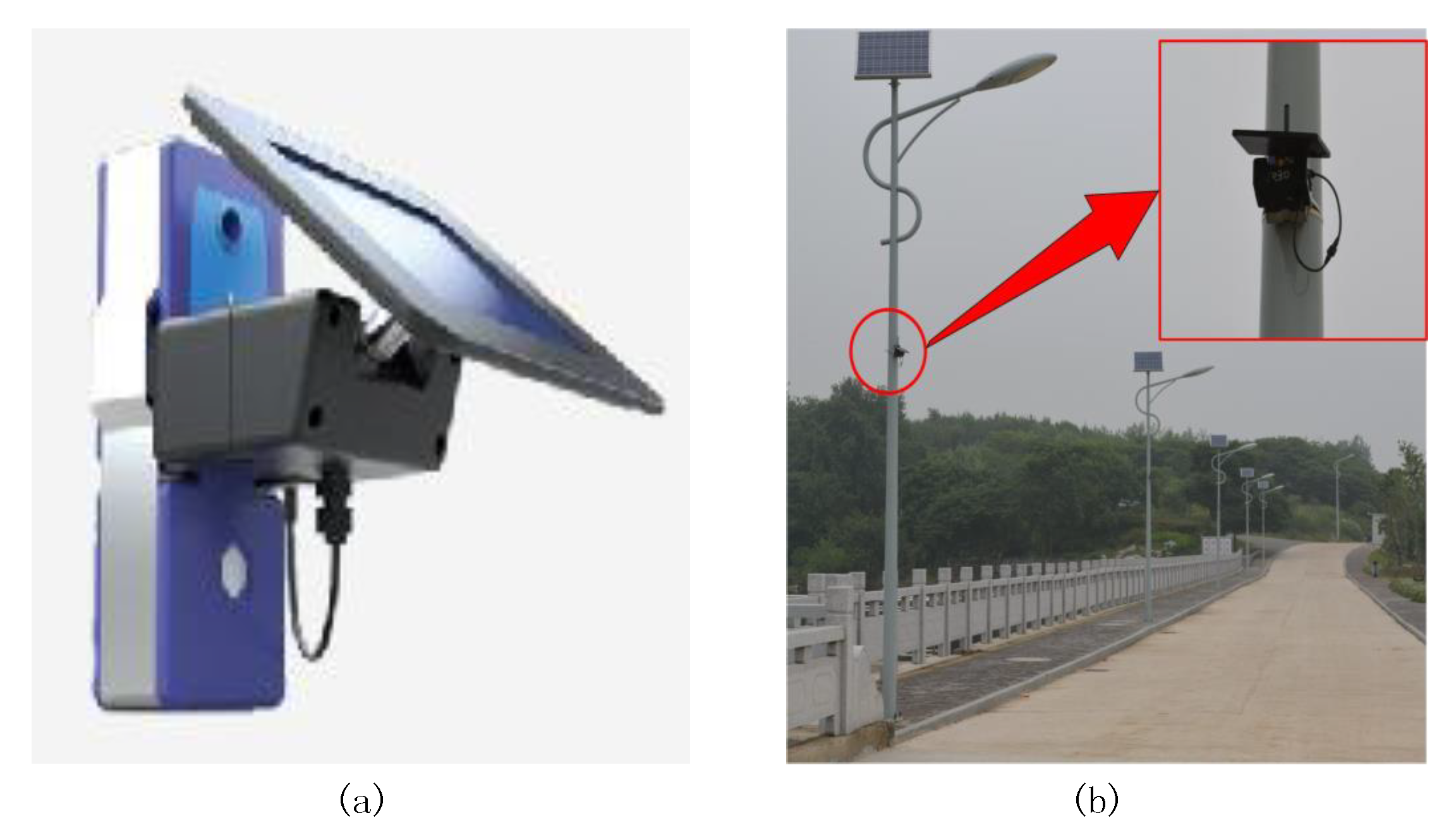
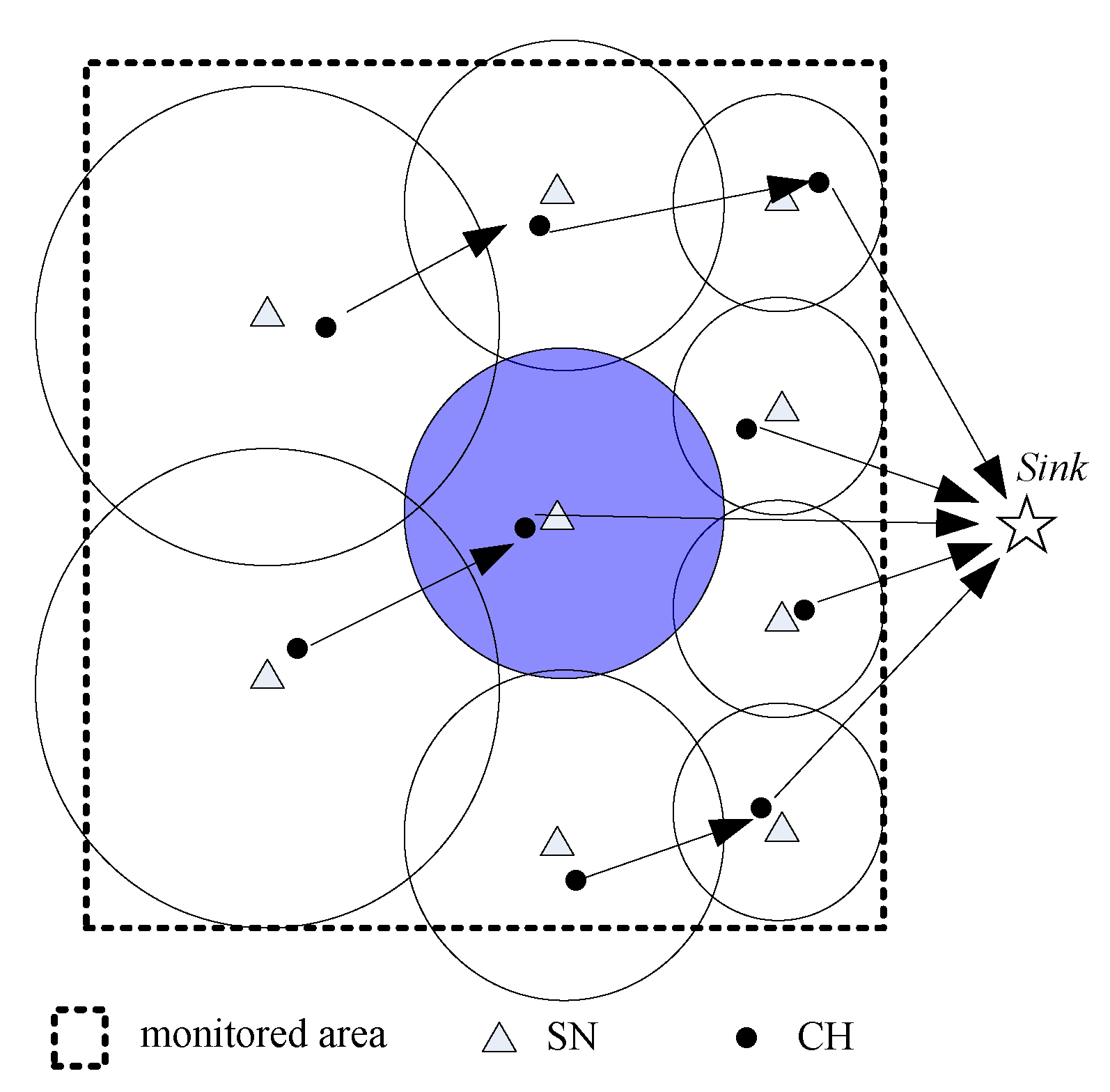
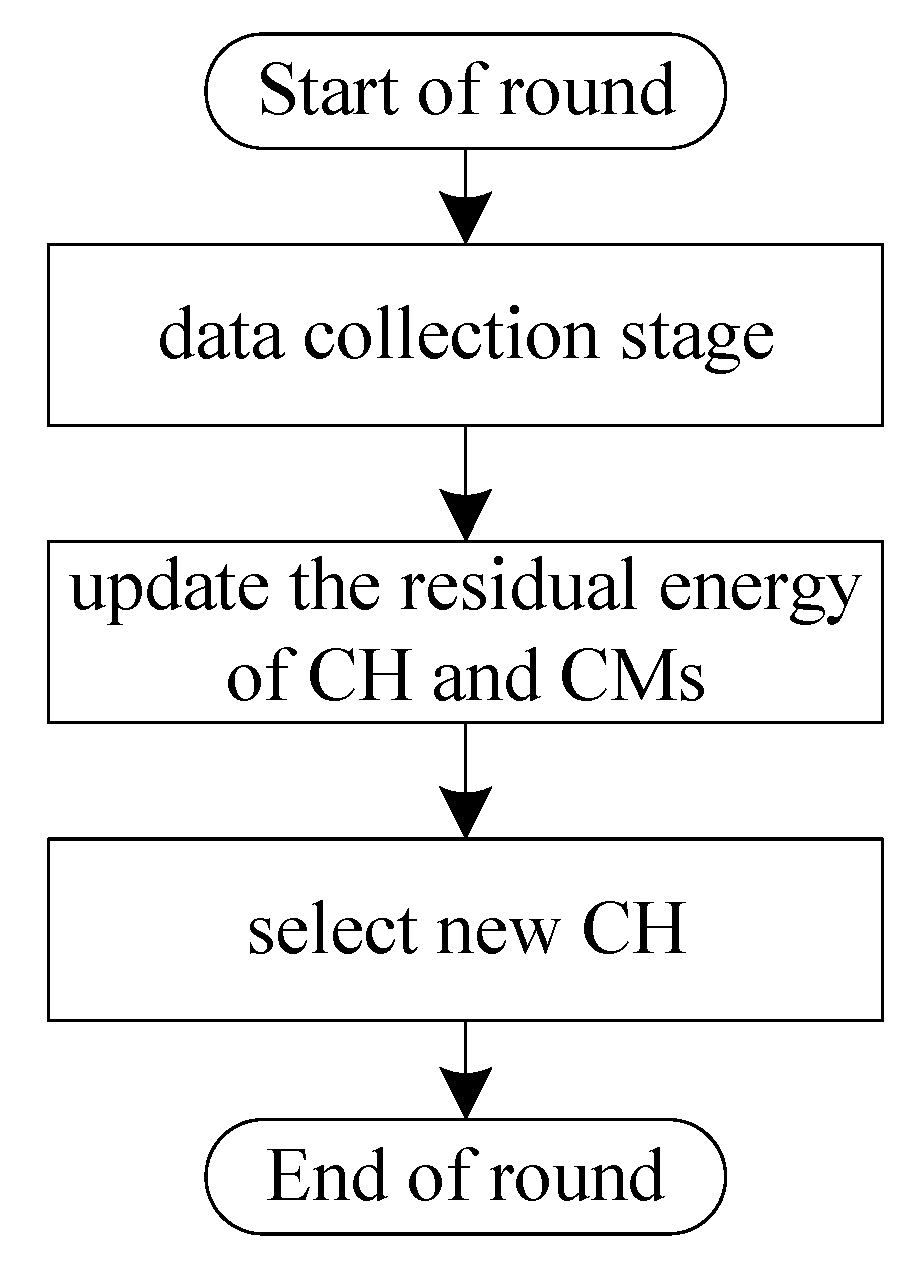
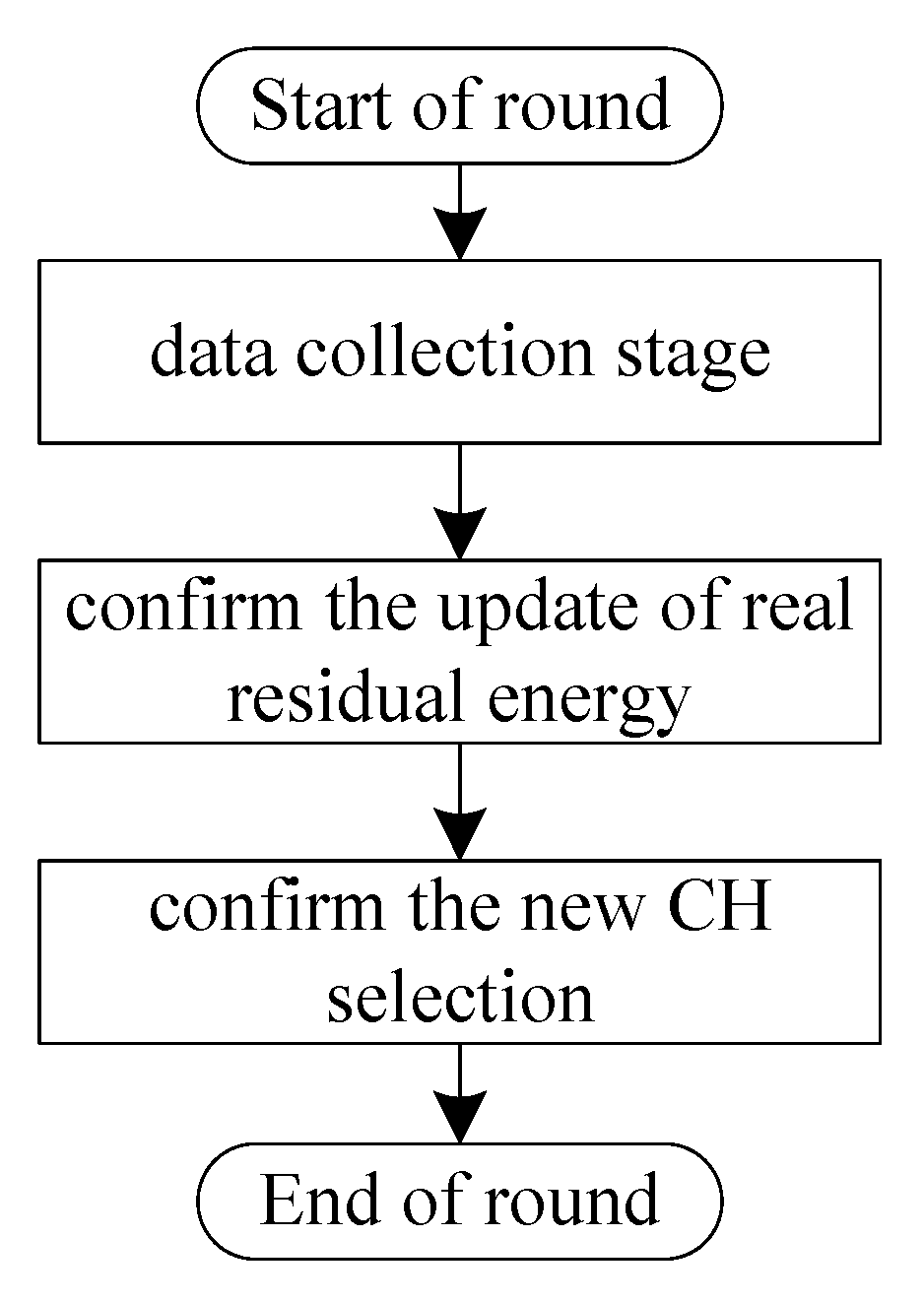
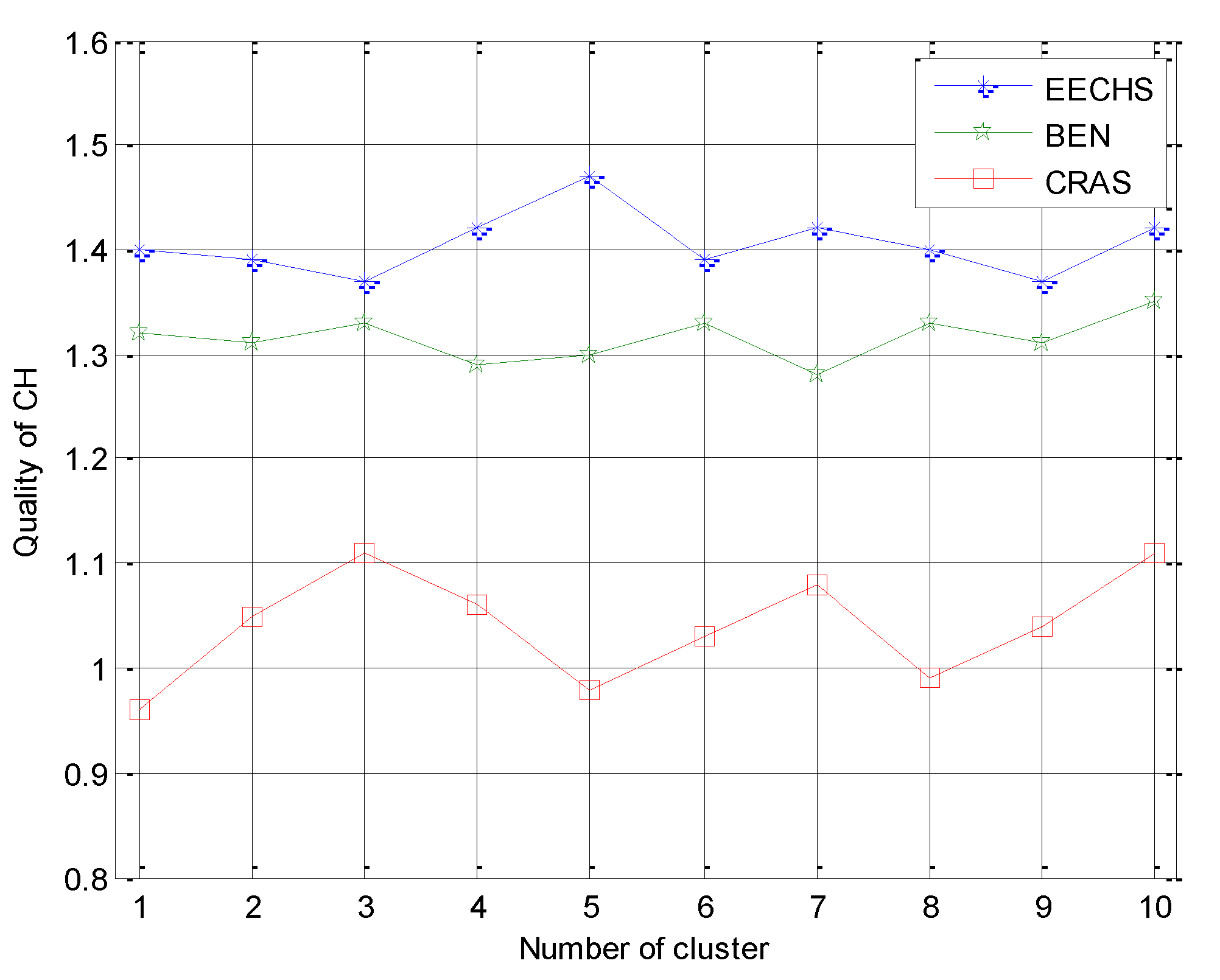

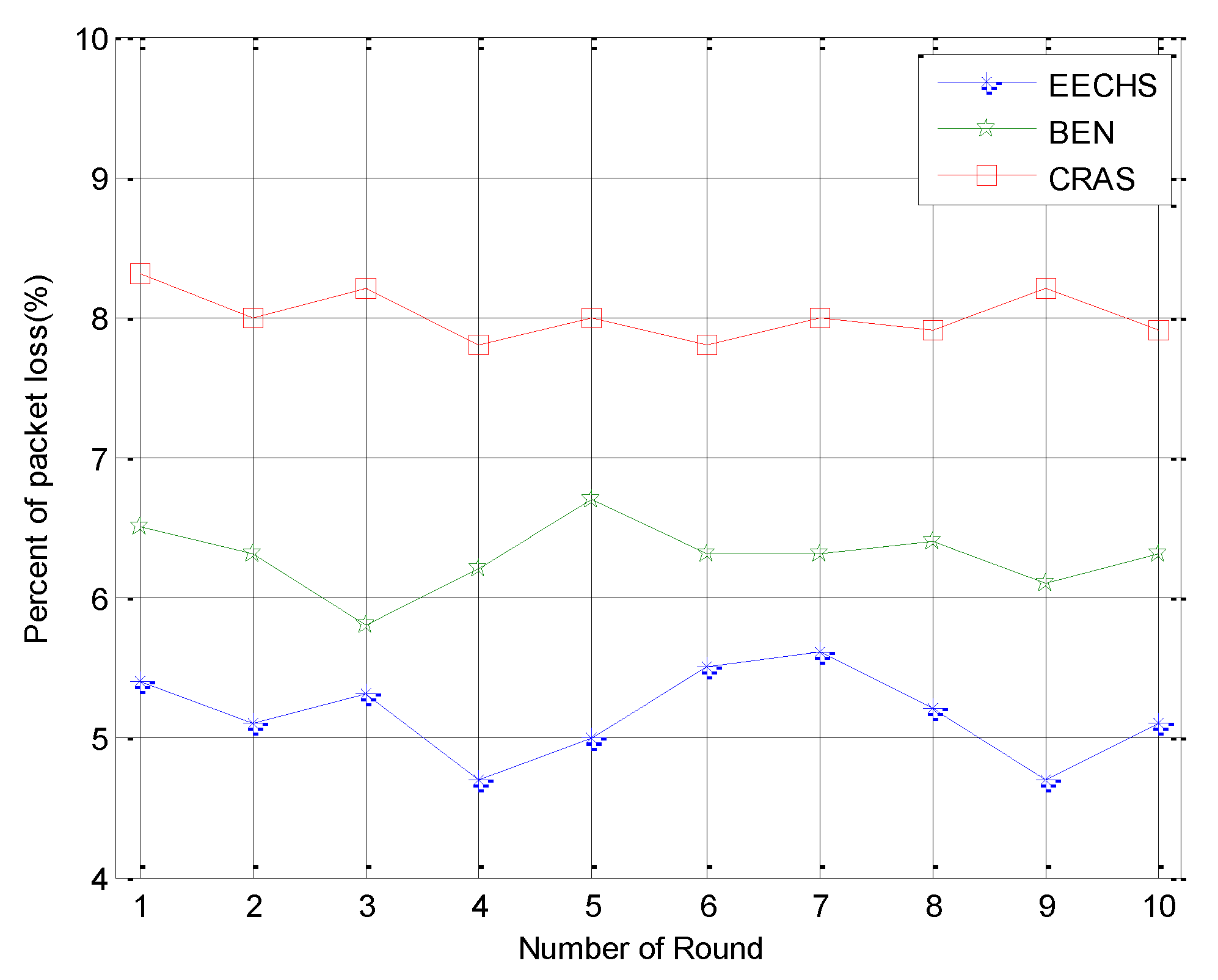
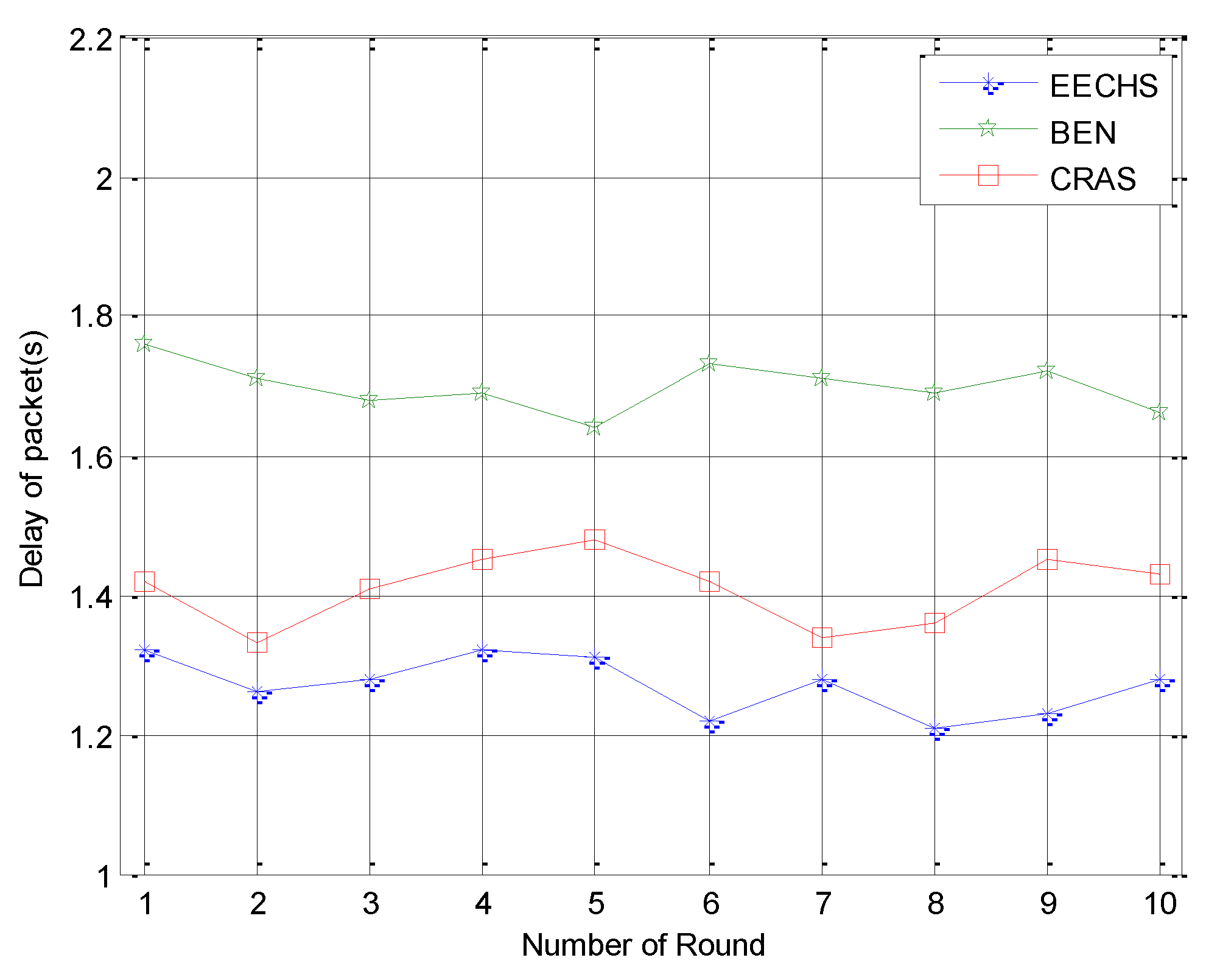
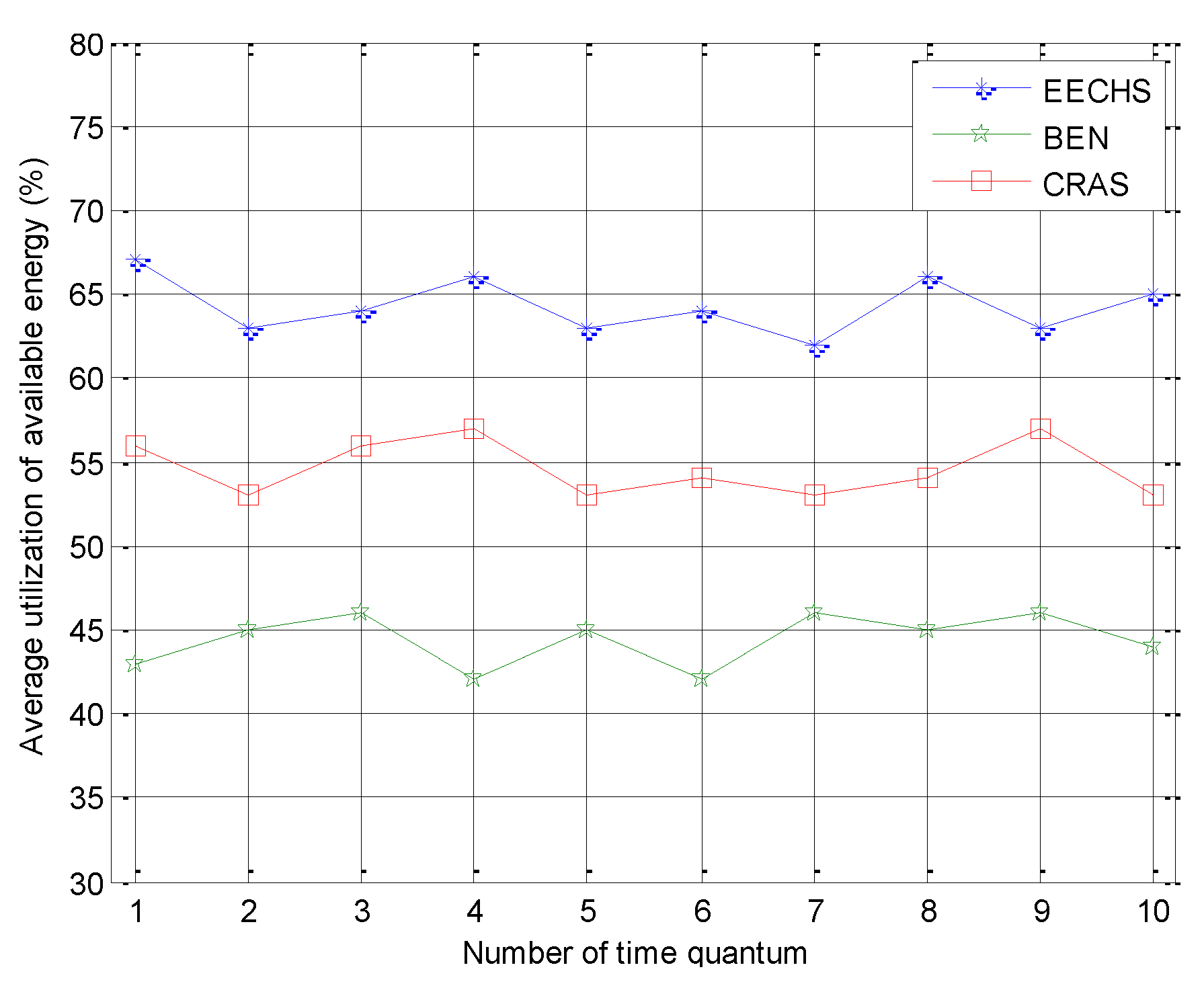
| Parameter | Value |
|---|---|
| Size of network | 500 m × 500 m |
| Number of sensor nodes | 300 |
| Location of the Sink | (505 m, 250 m) |
| 60 J | |
| 100 J | |
| 50 nJ/bit | |
| 10 pJ/bit/m2 | |
| 0.0013 pJ/bit/m4 | |
| T | 10 |
| Size of each packet | 200 bytes |
| 1/3 | |
| 10% | |
| Size of solar panel | 10 mm × 10 mm |
| The percent of sensor nodes in the shaded area | 20% |
© 2019 by the authors. Licensee MDPI, Basel, Switzerland. This article is an open access article distributed under the terms and conditions of the Creative Commons Attribution (CC BY) license (http://creativecommons.org/licenses/by/4.0/).
Share and Cite
Ren, Q.; Yao, G. An Energy-Efficient Cluster Head Selection Scheme for Energy-Harvesting Wireless Sensor Networks. Sensors 2020, 20, 187. https://doi.org/10.3390/s20010187
Ren Q, Yao G. An Energy-Efficient Cluster Head Selection Scheme for Energy-Harvesting Wireless Sensor Networks. Sensors. 2020; 20(1):187. https://doi.org/10.3390/s20010187
Chicago/Turabian StyleRen, Qian, and Guangshun Yao. 2020. "An Energy-Efficient Cluster Head Selection Scheme for Energy-Harvesting Wireless Sensor Networks" Sensors 20, no. 1: 187. https://doi.org/10.3390/s20010187
APA StyleRen, Q., & Yao, G. (2020). An Energy-Efficient Cluster Head Selection Scheme for Energy-Harvesting Wireless Sensor Networks. Sensors, 20(1), 187. https://doi.org/10.3390/s20010187





